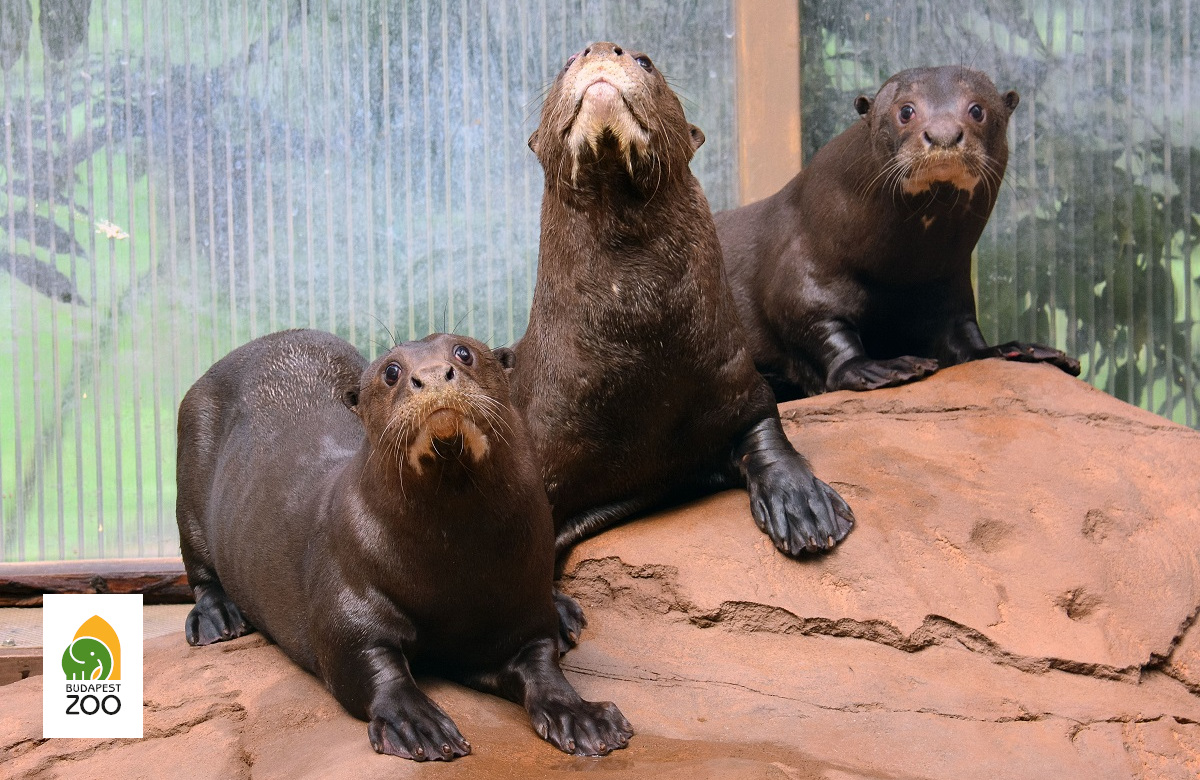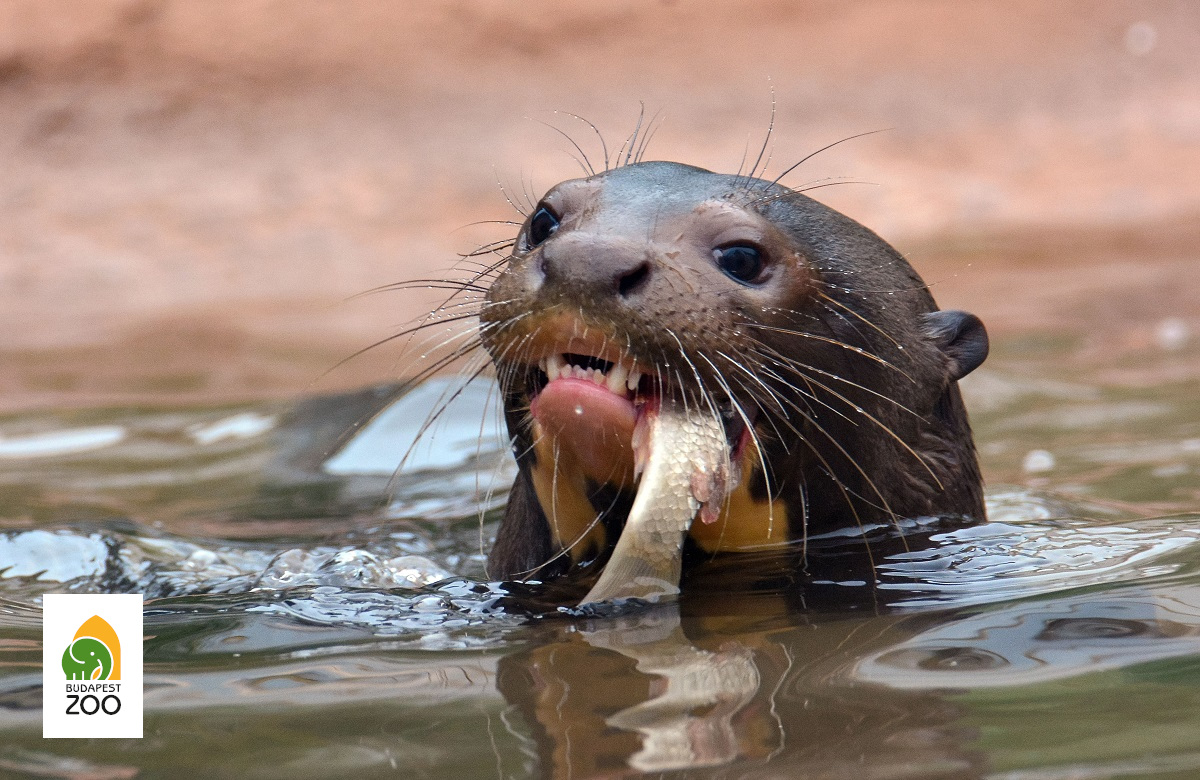Five years with giant otters November 8, 2019
 Keeping otters has history of more than a century at our Zoo. Of course, over this long period, otters have mostly been represented by Eurasian otters, a species that is also native to Hungary. We have also achieved great results with them in the past, from breeding through research to tracking the impact on wildlife of the cyanide pollution in the Tisza River in 2000. Although we do not display such otters today, we occasionally deal with rescued otters in need of help as part of our animal rescue efforts.
Keeping otters has history of more than a century at our Zoo. Of course, over this long period, otters have mostly been represented by Eurasian otters, a species that is also native to Hungary. We have also achieved great results with them in the past, from breeding through research to tracking the impact on wildlife of the cyanide pollution in the Tisza River in 2000. Although we do not display such otters today, we occasionally deal with rescued otters in need of help as part of our animal rescue efforts.
There are, of course, twelve other otter species besides Eurasian otters. Among these exotic species, we have displayed and even bred Asian small-clawed otters for years in the past. Nowadays, however, Brazilian giant otters represent this group of animals. We have been planning their presentation for a long time, but for a long time we simply did not have enough space to create a suitable enclosure for them. In 2014, for the first time in its history, the area of our Zoo was finally able to grow. And since animals have moved into the new areas from the classic area of the garden, we have created several new showrooms in the spaces that were liberated in this way. This was the case, for example, with the creation of the Australian Path and the Pampas Run in the first half of 2014, as well as the new location of the Butterfly Garden, where it is currently located. And so the much-awaited giant otters could also have a proper space.
In September 2014, the new location was handed over and the newly arrived giant otters were introduced; we reported on the event and the animals in detail at that time. The starting stock consisted of three female animals, Alondra (Alonda), Cora and Cumana. The oldest of them, Alondra from Duisburg, was born on July 4 2011. Cora and Cumana are sisters, and also somewhat younger. They were born on October 13 2012 at Leipzig Zoo.
In the weeks following the official opening, all three giant otters thoroughly discovered their new home. They played a lot, were very active, and enjoyed the sunshine in the corner next to the outdoor pool.
 Initially, these three animals went almost everywhere together, and when they wanted to relax, they lay dozing on each other, forming a heap of giant otters. The following year, however, there was some - quite natural - tension between Alondra and the two siblings, Cora and Cumana, which can be considered natural. Alondra was therefore, often seen by the public in a place separated from the other two animals.
Initially, these three animals went almost everywhere together, and when they wanted to relax, they lay dozing on each other, forming a heap of giant otters. The following year, however, there was some - quite natural - tension between Alondra and the two siblings, Cora and Cumana, which can be considered natural. Alondra was therefore, often seen by the public in a place separated from the other two animals.
By the way, an aquatic plant, known as both mussel raft and water salad, was introduced into the giant otters' pool already in the first year. This plant was a spectacular sight for the enclosure, and the otters apparently welcomed it (since then we have introduced it to the pools of other animals, such as the giant anteater and the hippopotamus).
Based on the experience of the past five years, we can say that our quick and agile giant otters, Cumana, Cora and Alondra, have been a great success with our visitors. Especially at the otter show feedings, held in the high season as part of our adventure programme called Be There! Of course, it could be expected from the very beginning that our otter stock, consisting of three female otters, would change over time. The time has come this year, in 2019: one of our females is participating in a wildlife resettlement programme, another is going to a foreign zoo, and a male is coming to replace her, next to a third female. However, we will cover all of these in our next and subsequent articles.